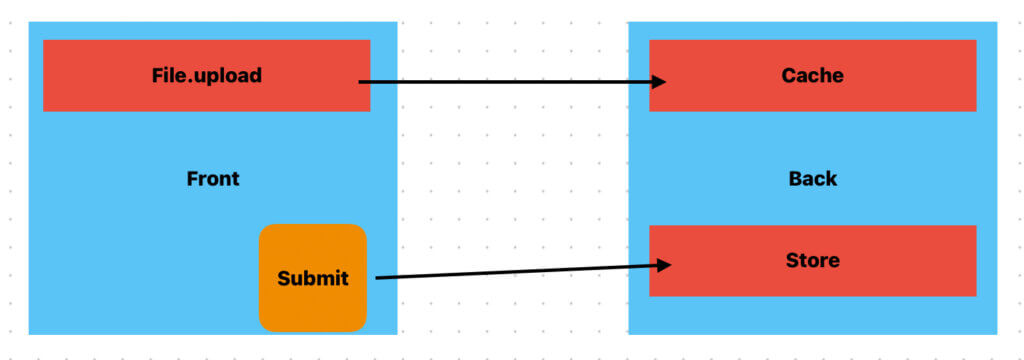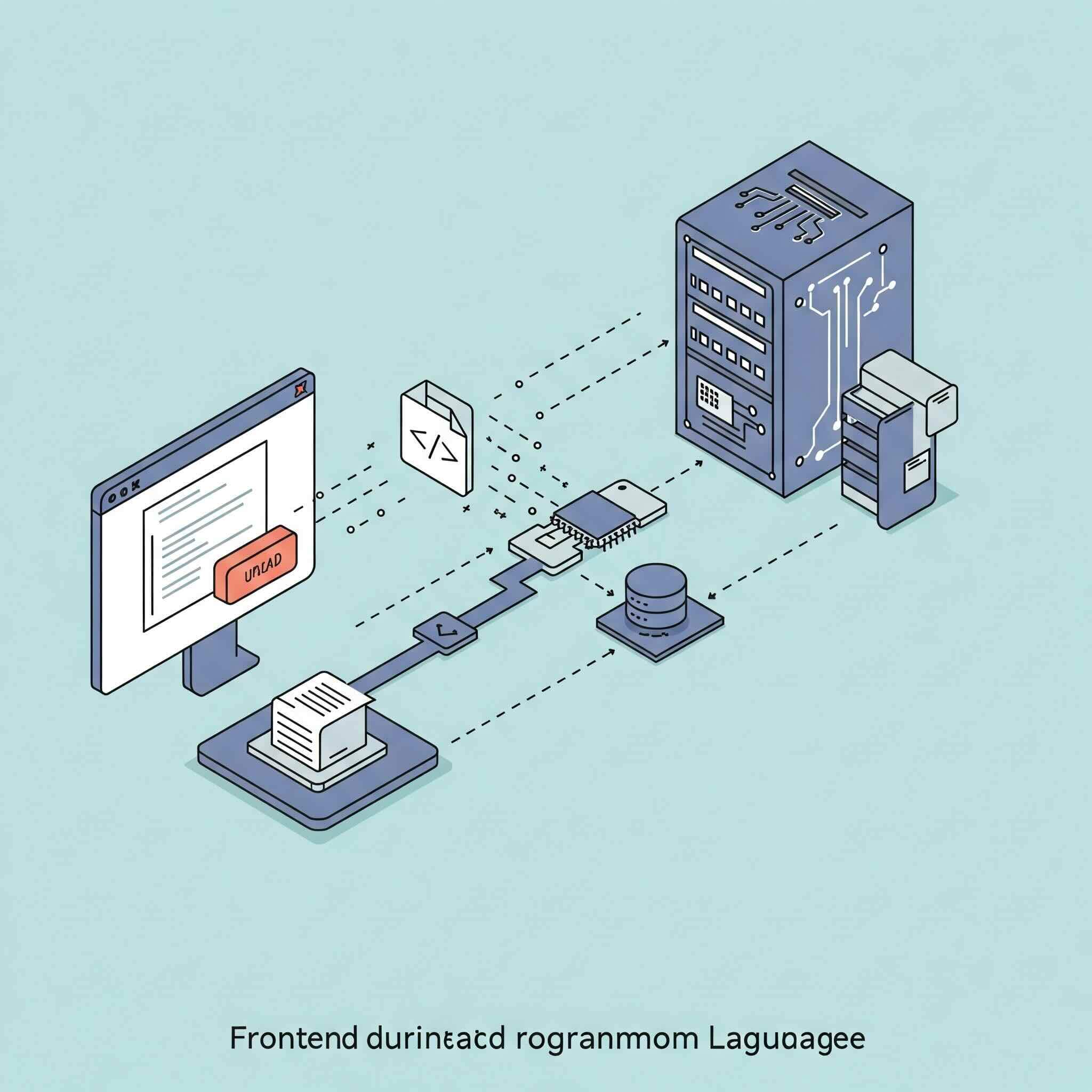laravel file upload GCS 檔案上傳處理邏輯
前言:
檔案上傳是非常常見的需求邏輯,如果是很基礎的將檔案存放在系統資料夾內,那麼問題不大
問題在於,基於無狀態的系統運作架構如K8s,我們都會希望將檔案另外儲存起來,如GCS
這時候就會遇上,當資料變更時該如何好好的同步來處理這個檔案
下面將著重在後端對於檔案的處理方式
資料處理流程大致如下

前端
在Nuxt的結構下我們已經設計好一個名為File 的Component
|
1 |
<File ref="file_upload" :multiple="true" :files="submit_data.files"></File> |
並且在ㄓFile這個Component中,設計好一個method名為upload如下,用於將檔案往後端URL送出
|
1 2 3 4 5 6 7 8 9 10 11 12 13 14 15 16 17 18 19 20 21 22 23 24 25 26 27 28 29 30 31 32 33 34 35 36 37 38 39 40 |
async upload(){ let upload_url = process.env.MIX_API_URL+'/api/file_upload' let error_message = '' let upload_results = [] try { for (let index in this.storedFiles) { let formData = new FormData() formData.append('file', this.storedFiles[index]) let upload_result = await axios({ method: 'post', url: upload_url, data: formData }) if(typeof upload_result.data !== 'undefined'){ upload_results.push(upload_result.data.data) } } }catch (err) { error_message = err; if (err?.response?.data) { error_message = err.response.data.message; } throw TypeError(error_message) } if(error_message !== ''){ upload_results = false this.$swal({ title: '檔案上傳錯誤', html: error_message, icon: 'warning', confirmButtonText: '我知道了', showCancelButton: false }) throw TypeError(error_message) } return upload_results } |
內容很簡單,就是透過axios將檔案post到後端,如果有錯誤訊息就提示,沒有的話將後端回傳的結果return
upload method被呼叫的時間點會在前端將資料送出的前一刻,透過refs來將檔案送出
|
1 |
let create_files = await this.$refs.file_upload.upload() |
最後,將create_files連同表單其他資料再送往後端做資料儲存即可
後端
後端的邏輯是今天的重點,我們拆成幾個步驟來看
- 當前端的File送出檔案後,我們將檔案cache起來,並且還給前端一把key
- 當前端表單所有資料送出後,我們使用key將cache起來的檔案讀出,並且送至GCS中實際儲存
因此,我們設計了三個Service來處理事情
首先,因為如果在後端Controller中寫死哪幾個column需要做檔案處理那麼彈性就太過不足,因此我們在Model中描述了$file_columns,借此透過抽象邏輯來處理每張資料表要儲存的檔案欄位
|
1 |
FileColumnProcessService |
作為入口,負責處理CRUD四個動作時檔案的欄位值提取,以及處理動作
|
1 |
FileHandleService |
實際處理檔案從cache中取出、還原、上傳到GCS等等操作
|
1 |
ImageProcessService |
作為檔案處理的一環,對於圖片的所有處理,包含壓縮、變更長寬,以及iOS的heic檔案處理等等
實際檔案的儲存還是透過跟這篇相同的套件直接傳入GCS中
https://www.alvinchen.club/2019/08/28/laravel-%e4%b8%8a%e5%82%b3%e6%aa%94%e6%a1%88%e5%88%b0google-cloud-plateform-storage-gcs/
Service
接著我們以create來舉例檔案處理的步驟
|
1 2 3 4 5 6 7 8 |
class FileColumnProcessService { public function create(array $payload, String $model): array { $all_file_columns = $this->_get_file_columns($model); return $this->_process_create(structure: $all_file_columns,payload: $payload); } } |
其中,_get_file_columns會透過 RelectionClass取出指定的model中定義的file_columns,這樣就會之到前端送來的資料中有哪幾個column是需要處理的
_process_create中會呼叫FileHandleService實際處理每一個需要將檔案正確擺放到GCS上的邏輯
接著讓我們來看FileHandleService中定義的幾個重要method
|
1 2 3 4 5 6 7 8 9 10 11 12 13 14 15 16 17 18 19 20 21 22 23 24 25 26 27 28 29 30 |
class FileHandleService { public function cache(UploadedFile $file): string { $key = Str::uuid()->toString(); $org_name = $file->getClientOriginalName(); if(Cache::has('file_name_cache_'.$org_name)){ $key = Cache::get('file_name_cache_'.$org_name); }else{ Cache::set('file_name_cache_'.$org_name, $key, $this->file_cache_ttl); Cache::set($key, ['name'=>$org_name,'content'=>$file->get()], $this->file_cache_ttl); } return $key; } public function store(array|string $file_key): array { $result = []; $upload_files = $this->_make_files(key:$file_key); foreach($upload_files as $upload_file){ $org_name = $upload_file->getClientOriginalName(); $upload_file = $this->imageProcessService->make($upload_file); $stored_path = $upload_file->store(env('UPLOAD_DIR')); $size = Storage::size($stored_path); $info = pathinfo($stored_path); $result[] = [........]; } return $result; } } |
cache用於對應前端File Component送出的請求,將檔案直接透過Laravel 的cacheh存下來
store用於對於前端表單資料的請求,實際上就是將檔案從cache中讀出,然後送到GCS上,最後依照需要儲存的檔案資料組成$result返回就行
過程中,讀出cache中的資訊,寫入temp file中轉換成UploadedFile,再藉由Larvel原生的store function將檔案儲存到GCS上
這邊就不多做描述,有興趣可以至github上查閱
Controller
因此,在controller中,我們就能濃縮成這樣子來描述檔案欄位的處理
|
1 |
$this->file_column_process_service->create(payload:$payload,model:CUSTOMER_MODEL::class); |
payload 為前端傳入的所有資料,CUSTOMER_MODEL即是本次要寫入檔案資料的表單model

